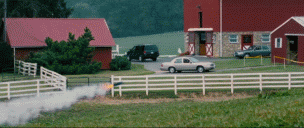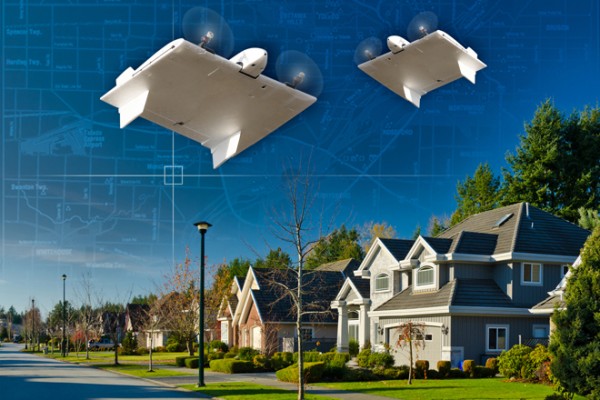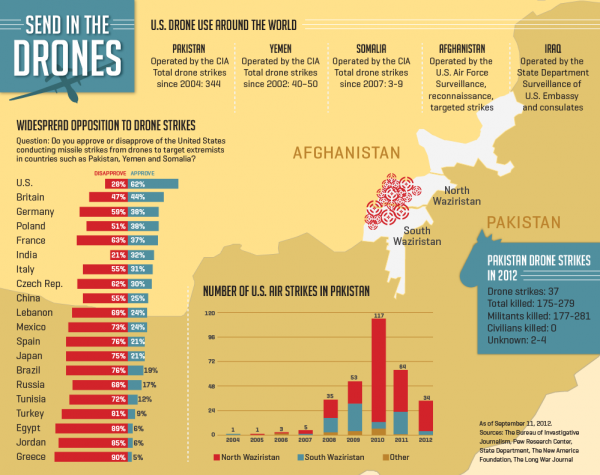FRESH AIR
New York Times reporter Scott Shane and colleague Jo Becker reported last year that the Obama administration has a list of terrorists targeted for drone attacks, and that the president personally approves such strikes. The administration has been trying to keep details of its drone program under wraps, arguing that to make it public could threaten national security. Shane has reported numerous such stories. Last week, he wrote that the U.S. has a military base in Saudi Arabia from which they launch drone strikes. Several news organizations, including the Times, had known for months about the drone base, but had been sitting on the information at the urging of the Obama administration. But the location of bases, says Shane, was not the most interesting part of the story. “The most interesting part of this story,” he tells Fresh Air’s Terry Gross, “is how are we using a new military technology in countries where we’re not at war to kill suspected terrorists? How’s that going? What are the long term consequences? Is this the way we’ll be dealing with multiple problems perhaps even beyond terrorism in the future? Those are the questions that interest me.” MORE
RELATED: Last February, Congress ordered the FAA to create guidelines for domestic drone use—the agency is expected to release those guidelines later this summer, and drones might be cleared for private and law-enforcement use in the next couple years. There are numerous privacy, safety, and national security concerns that need to be addressed and many more that haven’t even been dreamed up yet—here’s what we should be on the watch for. When drones are eventually allowed to fly in American airspace, it’ll be a “very big change,” said Brookings senior fellow Benjamin Wittes. “Consider the rules that exist now—you can essentially fly a model aircraft of one sort or another for noncommercial purposes under 400 feet. You can putter around, but you can’t sell services, and you can’t get in the way of the big boys.” Experts predict as many as 30,000 unmanned aerial vehicles in a couple years—they’ll be owned by journalists, police departments, disaster rescue teams, scientists, real estate agents, and private citizens. The cost of flying a surveillance airplane or helicopter is several magnitudes above that of a battery-powered drone. The UAVs can stay aloft for long periods of time, and unlike helicopters, they can’t be easily detected. “People behave differently when they  know they’re under surveillance,” says Catherine Crump, of the American Civil Liberties Union. “We are not opposed to the domestic use of drones, but we’re concerned that they could become tools of general or pervasive surveillance.” MORE
know they’re under surveillance,” says Catherine Crump, of the American Civil Liberties Union. “We are not opposed to the domestic use of drones, but we’re concerned that they could become tools of general or pervasive surveillance.” MORE
RELATED: If you want to fly more than a hobbyist’s drone in the United States, you have to get permission from the Federal Aviation Administration. We’ve know for a while about some drones–the ones keeping an eye on the U.S.-Mexico border, for example–but this list of applications through October 2012, obtained and mapped by the Electronic Frontier Foundation, is the most up-to-date look at domestic-drone permissions we’ve got. The list is broken down by “entities,” places like colleges or local sheriff’s offices that have applied to the FAA for a license to use drones. The 81 entities on the list, 20 more than on the first list we saw from the EFF, are mixed: a lot of drones are going to government agencies like police departments, a lot to universities and colleges, others to drone manufacturers, and one to an Indian tribal agency. For some reason, Ohio seems to have been granted a lot of permits in this round. On this interactive map, you can find out what type of drones many applicants were authorized to use. MORE
RELATED: Penn State is among 81 public institutions that have applied to the Federal Aviation Administration (FAA) for a drone license, according to the Electronic Frontier Foundation. EFF cannot determine when the University petitioned the FAA for a Drone Certificate of Authorization, but it estimates that it occurred sometime between July 2011 and October 2012. The FAA did not mention why Penn State would like to own a drone, although it’s safe to assume the University doesn’t want to drop bombs on us. A Penn State spokesperson told The Daily Collegian that the drone application, sent by the Aerospace Engineering Department for research, was denied. MORE


